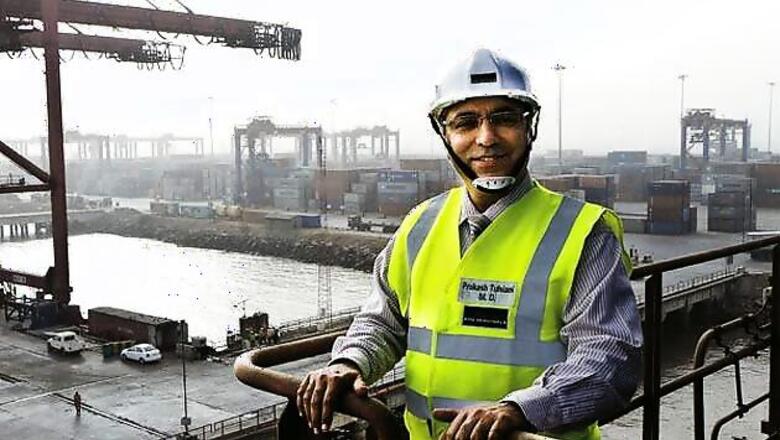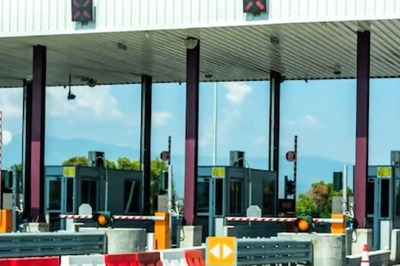
views
The port of Pipavav should have made money hand over fist ever since it started operations in 1998. After all, located deep in the Saurashtra region in south Gujarat, it is a gateway port that caters to landlocked regions like Delhi, the National Capital Region, Punjab and also the rich states of Maharashtra, Gujarat and Rajasthan.
It handles more reefer trains (refrigerated trains that carry fish, meat, etc) than any other port in Gujarat. This is due to its proximity to major refrigeration centres of Viraval and Porbandar. Yet, it made losses for more than a decade.
All that changed in 2011, the first year the port made profits. In the 12 months ended December 30, 2011 (it follows the calendar year), it earned a profit of Rs 57.10 crore on revenues of Rs 366.19 crore — a significant jump from the Rs 54.72 crore loss it suffered in 2010. Today, Pipavav is one of the fastest growing ports not only in India but also worldwide.
One of the reasons for this turnaround is that Pipavav is gaining from the capacity crunch at Nhava Sheva port in Navi Mumbai, run by Jawaharlal Nehru Port Trust (JNPT). The concession for building the fourth terminal at Nhava Sheva is mired in dispute. As a result, it cannot handle more shipping traffic (it is already operating at over 100 percent capacity). Ports in Gujarat are the primary beneficiaries — especially Pipavav, which is just 10 hours (one-way, about 152 nautical miles) steaming time from Nhava Sheva.
Now, 6 million TEUs (twenty foot equivalent units) per annum come into the north and north-west market which includes Nhava Sheva, Mundra and Pipavav. Assuming the market grows at 9-10 percent—a modest estimate considering that the growth in the container business has been double the growth in GDP — the three ports would handle an additional 600,000 TEUs per annum. With Nhava Sheva running at over capacity, "You divide the growth between Mundra and Pipavav in whichever way you like. Even if we get one-third, we're looking at adding 200,000 TEU," says a confident Prakash Tulsiani, MD of Gujarat Pipavav Port Ltd.
More than coincidence, it is Tulsiani's effort, along with CFO Hariharan Iyer and COO Ravi Gaitonde that has turned around the port. These are the three men AP Moller-Maersk (APMM), the Danish shipping conglomerate, charged with the task of turning around Pipavav when it bought out Nikhil Gandhi, the founder, in 2005.
Nikhil Gandhi was the original brain behind Pipavav Port. In 1992, his company SKIL Infrastructure (then known as Seaking Engineers) formed a joint venture with the Gujarat Maritime Board (GMB) to form Gujarat Pipavav Port Ltd (GPPL). In June 1998 GMB sold back its initial stake to SKIL and in September, a concession agreement was signed in accordance with a Build, Own, Operate, Transfer (BOOT) policy. In June 2001, Maersk India, a subsidiary of APMM, bought a 13.5 per cent stake in Pipavav. At around the same time, APMM formed APM Terminal Holdings to manage its port and termninal operations worldwide.
Four years later, the port was yet to start operations in full swing. So, in 2005, APM Terminals Mauritius (to which APM Terminal Holdings transferred the initial stake) along with IDFC Private Equity bought out Nikhil Gandhi and other strategic investors to gain majority control and signed a new concession with GMB in 2006 for a tenure up to 2028.
Profits would still take some time to materialise. The then Managing Director Philip Littlejohn's priority was to get the project up and ready. But it took about 22 months to get the government approval to take effective control, and nearly 15 months to get approval for expansion of the port through dredging to increase the depth so it could handle larger ships — the delay meant cost overruns.
Sometime in 2008, APMM finally understood that in the Indian market, you need local managers to create a market for itself. That's when it brought in Gaitonde and later Tulsiani and Iyer. These three are the trusted lieutenants of Maersk, having worked and risen up the ranks of the company in the last two decades.
















Comments
0 comment